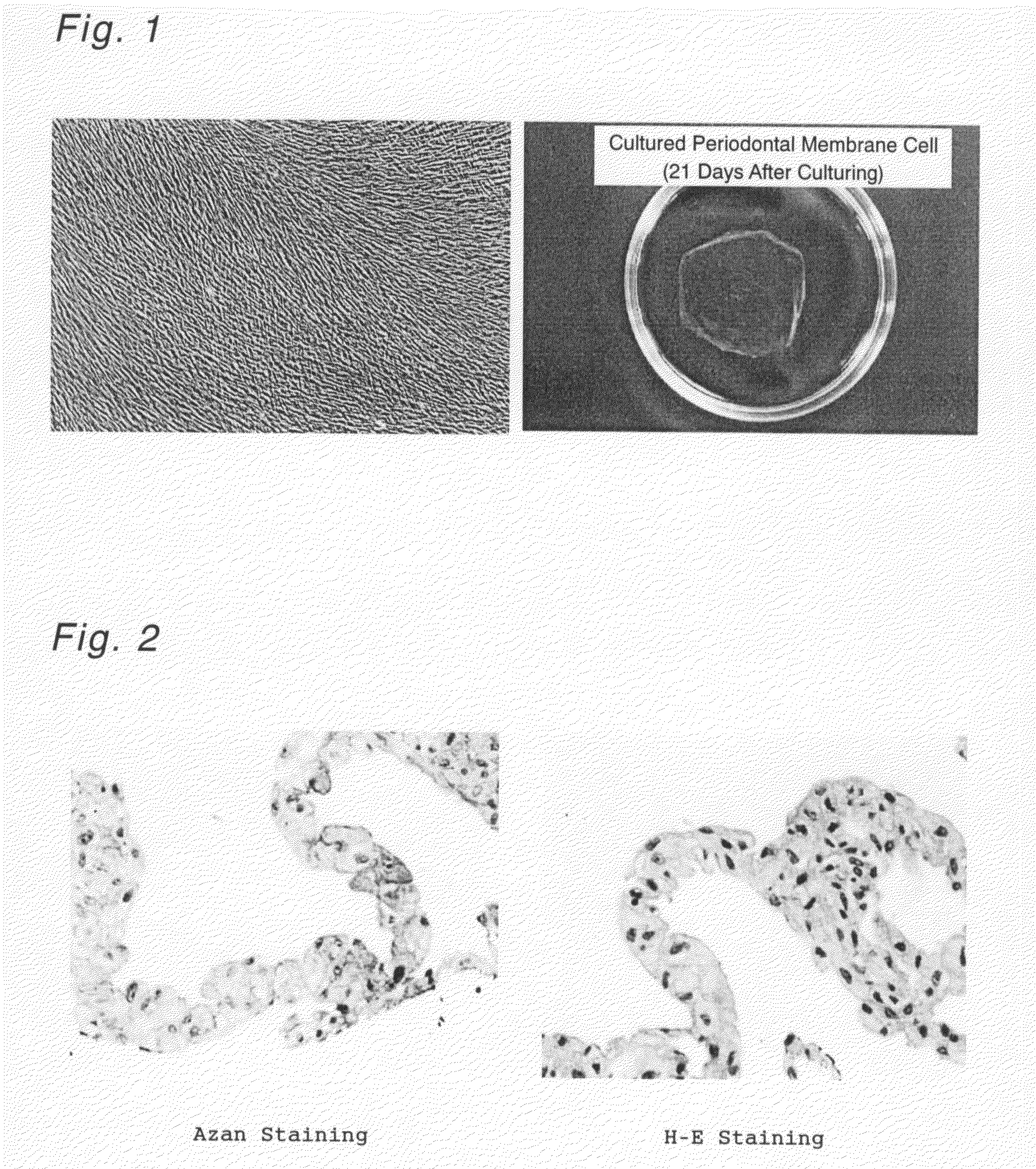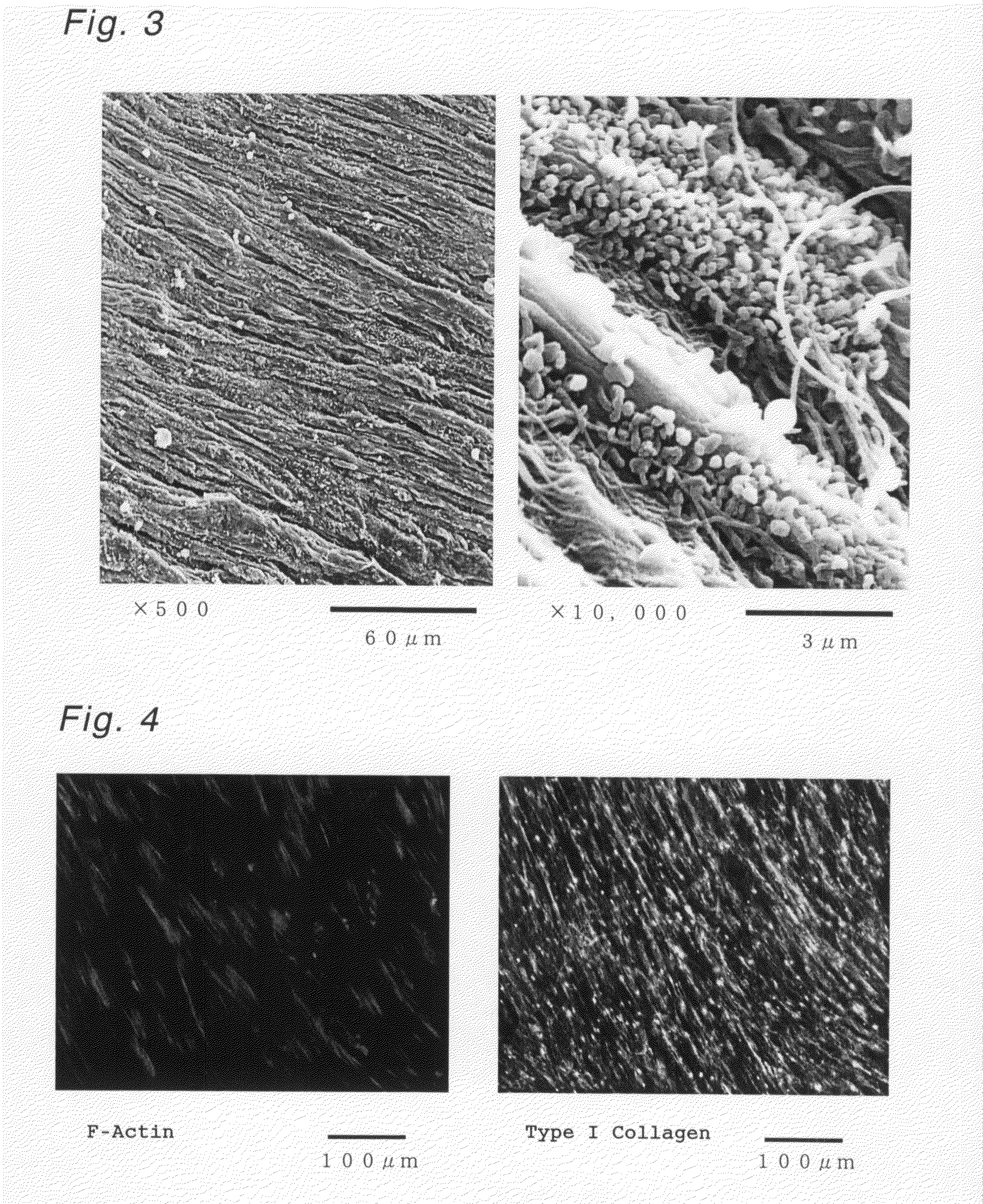Cultured Periodontal Membrane Cell Sheet, Process for Producing the Same and Method of Use Thereof
- Summary
- Abstract
- Description
- Claims
- Application Information
AI Technical Summary
Benefits of technology
Problems solved by technology
Method used
Image
Examples
example
[0057]The present invention will now be explained in more detail based on examples but these examples are not to limit the present invention.
examples 1 and 2
[0058]On commercially available 3.5 cmφ culture dishes (FALCON 3001, a product of Becton Dickinson Labware), 0.07 ml of a 53% solution of an N-isopropyl acrylamide monomer dissolved in isopropyl alcohol (Example 1) and 0.07 ml of a 54% solution of the N-isopropyl acrylamide dissolved in isopropyl alcohol (Example 2) were coated, respectively. The obtained culture dishes were irradiated with an electron beam having an intensity of 0.25 MGy to immobilize an N-isopropyl acrylamide polymer (PIPAAm) on the culture dish surfaces. After the irradiation, the culture dishes were washed with ion-exchanged water to remove the remaining monomer and the PIPAAm unattached to the dishes, dried in a clean bench, and sterilized with an ethylene oxide gas to obtain cell culture support materials. When the amount of the temperature-responsive polymer on the substrate surface was measured, it was found that 1.8 μg / cm2 (Example 1) and 2.0 μg / cm2 (Example 2) were coated, respectively. Periodontal ligamen...
example 3
[0059]A cell culture support material was obtained in the same manner as in Example 2 except that 0.07 ml of a 50% solution of an N-isopropyl acrylamide dissolved in isopropyl alcohol was coated on the above described commercially available 3.5 cmφ culture dish (FALCON 3001). When the amount of the temperature-responsive polymer on the substrate surface was measured, it was found that 2.1 μg / cm2 was coated. Periodontal ligament tissues were collected from the maxillary molar part of an F344 nude rat and subjected to enzyme treatment according to the conventional method to recover cementoblasts and osteoblasts. Each type of the cells was separately seeded (1×105 cells / 3.5 cm dish) on the support material surface. As a medium, the DMEM medium supplemented with 10% bovine serum and 50 μg / ml ascorbic acid diphosphate ester was used. As the result of the culturing at 37° C. under 5% CO2, each type of the cells on the culture support material normally adhered and proliferated. Each type o...
PUM
 Login to View More
Login to View More Abstract
Description
Claims
Application Information
 Login to View More
Login to View More - R&D
- Intellectual Property
- Life Sciences
- Materials
- Tech Scout
- Unparalleled Data Quality
- Higher Quality Content
- 60% Fewer Hallucinations
Browse by: Latest US Patents, China's latest patents, Technical Efficacy Thesaurus, Application Domain, Technology Topic, Popular Technical Reports.
© 2025 PatSnap. All rights reserved.Legal|Privacy policy|Modern Slavery Act Transparency Statement|Sitemap|About US| Contact US: help@patsnap.com



